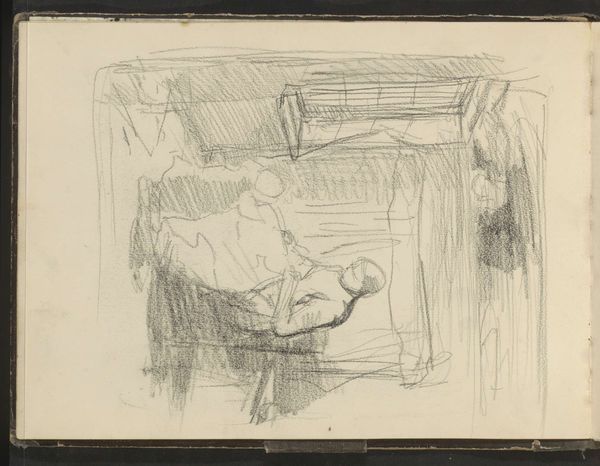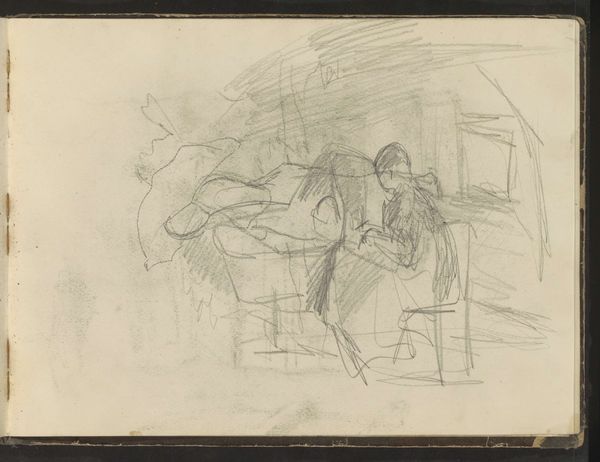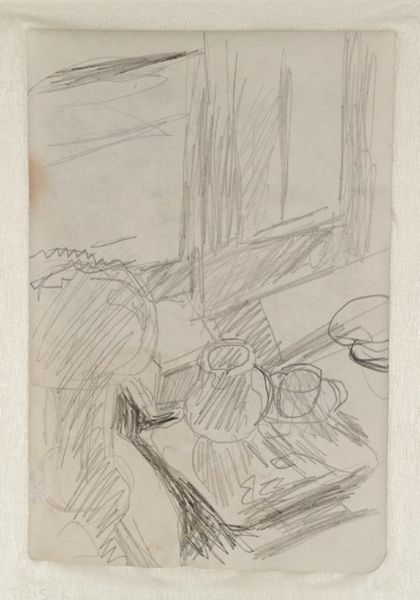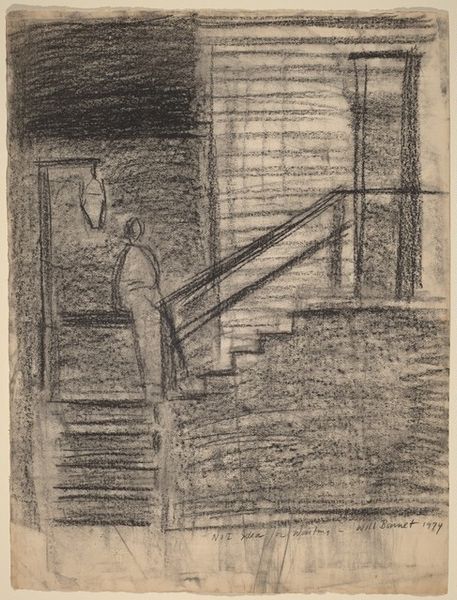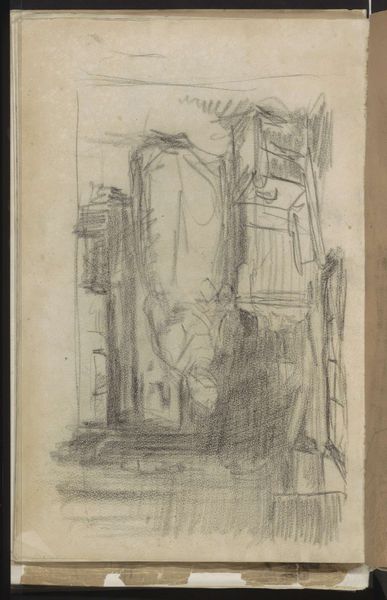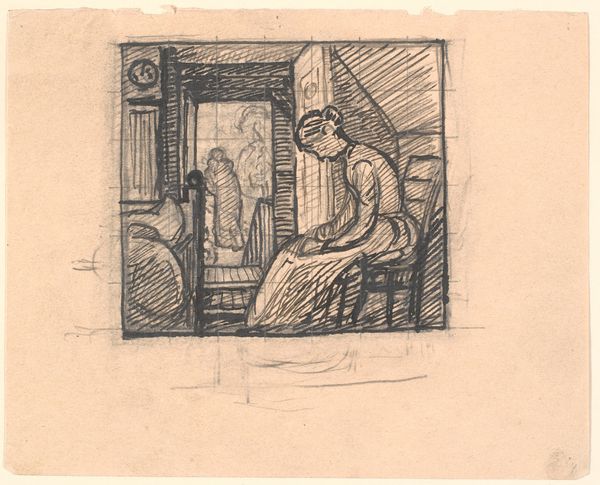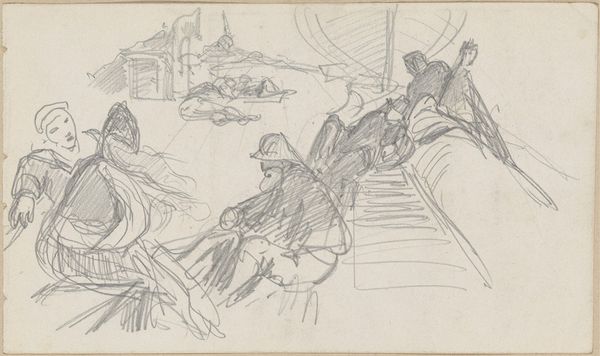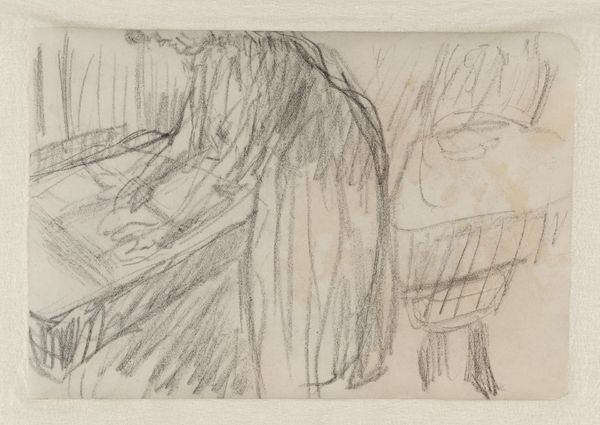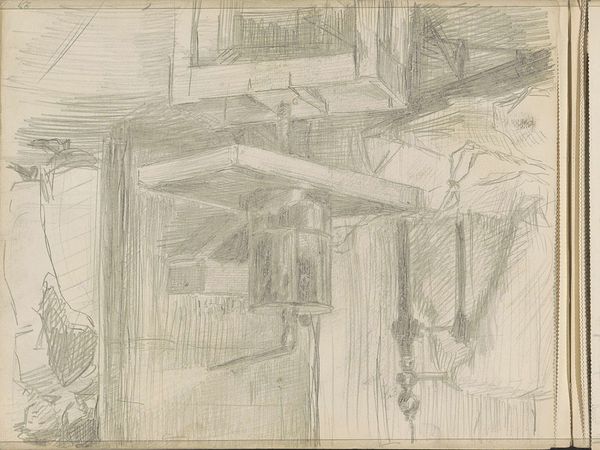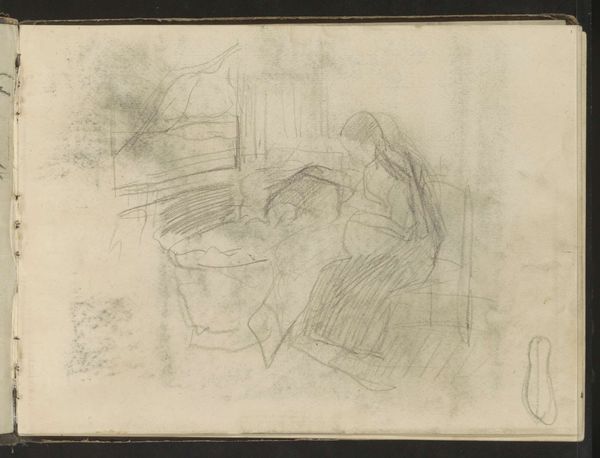
Woman with Long Hair Seen from the Back, Folding Screen to the Left
0:00
0:00
drawing, pencil
#
portrait
#
drawing
#
figuration
#
pencil
Dimensions: overall: 12.3 x 20.1 cm (4 13/16 x 7 15/16 in.)
Copyright: National Gallery of Art: CC0 1.0
Curator: What strikes me first is the sketchiness. The furious energy captured in the pencil strokes across the paper. Editor: Indeed, Mark Rothko's "Woman with Long Hair Seen from the Back, Folding Screen to the Left" presents an intriguing study in figuration through a rather minimalist approach. There’s a stark honesty in the visible pencil work, really emphasizing the process of drawing itself. Curator: Do you think he struggled with something? There's an unfinished quality about the left side with the screen, like an afterthought almost divorced from the main composition featuring the woman. Was he undecided on how to place the figure within the space? Editor: That unfinished quality, that “struggle,” as you call it, is fascinating precisely because it removes any sense of high polish or untouchable genius. We witness the artist thinking through making, how form can appear and be remade at will. This can encourage anyone who interacts with this drawing to reconsider ideas about craftsmanship. What does the making-of offer in relationship to the end product? Curator: It’s also impossible not to consider how portraiture itself, and specifically how women were represented in art, was shifting in Rothko’s time. The almost absent facial features, for instance, hint at a move away from idealized likeness and into a more psychological space. It almost feels like the face is withheld intentionally. What statement does that choice make in a broader, historical context? Editor: And it demands that we question how we even “see” someone, reducing identity to a set of structural details that serve specific functions like seeing or thinking—and how social pressures may make this flattening necessary. This is why figuration in art never occurs in a vacuum. The decision to feature one figure versus a faceless body speaks volumes regarding art-making under a late capitalist gaze. Curator: Perhaps. For me, Rothko's piece is also a testament to the raw and immediate quality that drawing as a medium affords. The materials themselves – paper and pencil – are humble. There's an honesty, a vulnerability almost. Editor: True. Rothko gives us pause about labor, identity, and historical visibility. The pencil itself feels like it implicates viewers into the artistic-production, which can spark conversations about cultural history on the level of the individual or community, rather than a universal “viewer.”
Comments
No comments
Be the first to comment and join the conversation on the ultimate creative platform.
